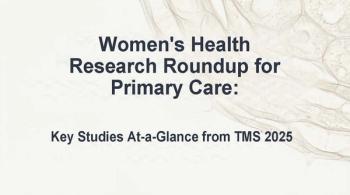
Buff Mice Offer Clues To Muscle Growth
BALTIMORE -- The muscle-bound Mighty Mouse created by taking away one protein gets even mightier when another is added.
BALTIMORE, Aug. 28 -- The muscle-bound Mighty Mouse created by taking away one protein gets even mightier when another is added.
Mice that lack the protein myostatin but over-express another - follistatin - have about four times the muscle mass of their wild cousins, according to Se-Jin Lee, M.D., Ph.D., of Johns Hopkins.
The finding hints that the pathways that regulate muscle growth are more complicated than previously thought, Dr. Lee reported online in the journal PLoS ONE.
And that may widen the scope of research into ways of using the myostatin pathway to treat human diseases in which there's a deficiency of muscle, such as muscular dystrophy or cachexia, he said.
Dr. Lee and colleagues showed in 1997 that mice that lack the circulating protein myostatin, a member of the transforming growth factor- (TGF-) family, have about double the muscle mass of wild mice.
They also showed that proteins that block myostatin, such as follistatin, have a similar effect.
The effect of missing myostatin was corroborated by reports of animals naturally lacking the protein and exhibiting over-developed muscles.
And in 2004, the New England Journal of Medicine published a case report of a boy born with a defective myostatin gene who was heavily muscled at birth and by age 4 and a half was able to hold three-kilogram dumbbells extended in either arm.
In the current experiments, Dr. Lee looked at mice lacking myostatin but over-expressing follistatin. His hypothesis was that there should be no further effect.
"To my surprise and delight, there was an additive effect," Dr. Lee said, implying that proteins other than myostatin are involved in regulating muscle growth.
"These findings show that the capacity for increasing muscle growth by targeting these pathways is much more extensive than we have appreciated," Dr. Lee said.
"Now we'll search for other players that cooperate with myostatin, so we can tap the full potential for enhancing muscle growth for clinical applications."
The finding may have clinical implications, as well, because research in the area has been hampered by the fact that myostatin levels in humans are lower than they are in mice, he said.
In his current experiments, Dr. Lee took transgenic mice lacking the myostatin gene and attempted to breed mice that over-expressed follistatin and other myostatin inhibitors.
As expected, mice with extra follistatin but normal myostatin had about double the muscle mass of wild-type mice. For instance, the pectoralis muscle of the wild-type mice weighed about 73.5 micrograms, compared with about 122 micrograms for the extra-follistatin mice, a difference that was significant at P
When the two effects were combined, the mice had a quadrupling of muscle mass that resulted from about a 73% increase in fiber number and a 117% increase in fiber cross-sectional area.
That finding implies that the additional muscle mass induced by follistatin in the absence of myostatin results from blocking other proteins whose role is to regulate muscle fiber growth, Dr. Lee concluded.
The greatest effect on muscle mass was observed in offspring of mothers homozygous for the myostatin mutation, raising the possibility that either myostatin itself or a downstream regulator may normally be transferred from the maternal to fetal circulations.
Newsletter
Enhance your clinical practice with the Patient Care newsletter, offering the latest evidence-based guidelines, diagnostic insights, and treatment strategies for primary care physicians.


















































































































































































































































































